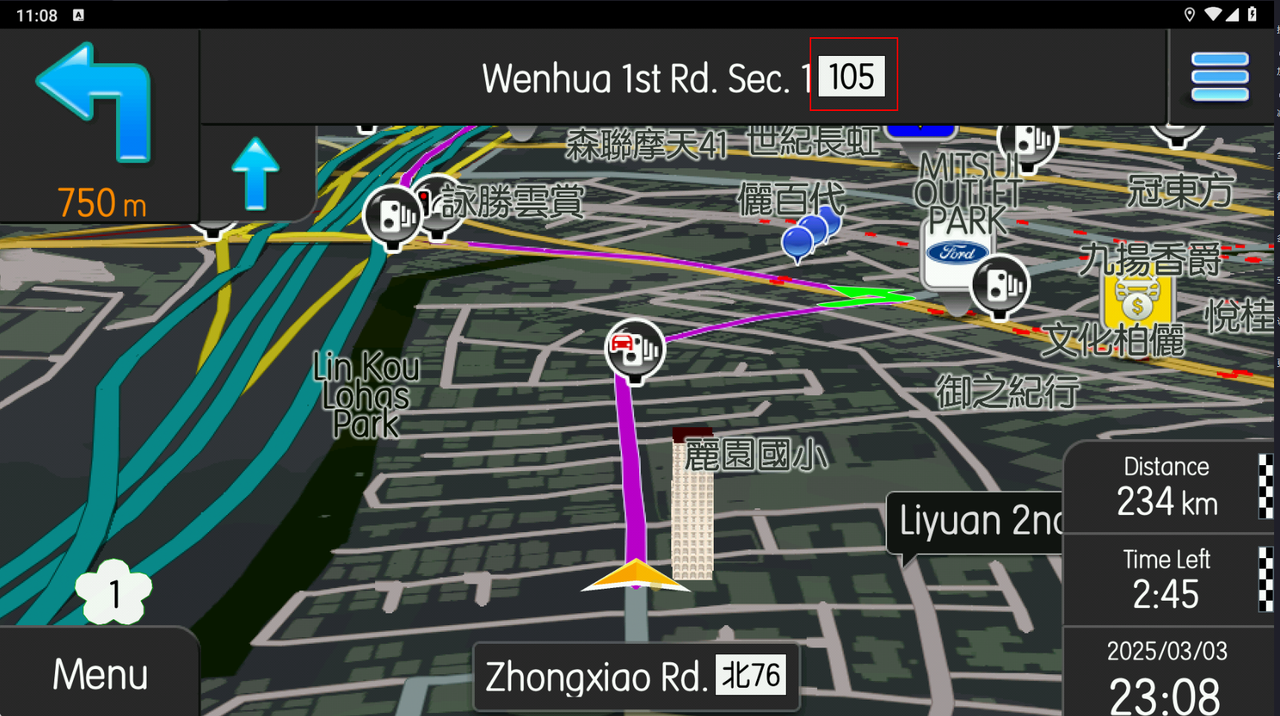For information:
it is the FBL that mainly contains the names of streets and cities, but not everything that exists can be included because otherwise the size of the file would become unmanageable,
the FBL contains as a priority the road space itself, and the use of geographical points could be sufficient for the creation of itineraries. It may very well contain only the main traffic routes, or go as far as the referencing of all the roads and hiking trails, it is like an encyclopedia containing only the essentials, or a whole host of detail, the weight of knowledge is no longer the same.
Overlaying of city and street data could also be found in ancillary files such as FTR,FDA,FPA, HNR, POI, etc. in simple or premium versions linked to licences.
Not finding streets associated with a lost village at the top of a mountain is not surprising and the configuration of igo is not in question, everything is based on the richness of the databases on which the research carried out is based.
search, for example, using an external provider as a google using an internet connection, if it is installed in igo, will in turn make it possible to obtain the geographical coordinates of the street searched and then located on the navigation map.
Another technique is to select the destination point on the map and see if the name of the street is inscribed in it, which will confirm that this name is correctly referenced in the FBL
It must be a little bit clearer for everyone
Welcome guest, is this your first visit? Click the "Create Account" button now to join.
Results 281 to 290 of 299
-
9th February 2025, 02:55 PM #281Junior Member


- Join Date
- Apr 2024
- Location
- hungary
- Posts
- 3
- Rep Power
- 0
-
9th February 2025, 06:53 PM #282Master













- Join Date
- Nov 2017
- Location
- europa
- Posts
- 123
- Rep Power
- 245

Last edited by lunapark; 9th February 2025 at 06:57 PM.
-
11th February 2025, 03:45 PM #283Member




- Join Date
- May 2017
- Location
- taiwan
- Posts
- 14
- Rep Power
- 0

Searching on different versions of iGO_Pal and iGO_World is normal
I found that address_search_classic played a role
Is there an address_search_classic that is compatible with this board?
Spoiler: search UX
-
12th February 2025, 09:57 AM #284

Pal/World/Israel ... are Nextgen editions, cannot be compared. Here the search is performed at the level of the apk itself.
Nothing prevents you from using a skin for Android Primo, but there is no guarantee that it will solve the problem. It is easily possible that the code layout is too much of an obstacle for the job
That's why a separate application was made just for the Far Eastern market (China/Japan...)
That apk is not available to me nor have I seen it posted somewhere. Nor is it cr*cked
By the way, online features have been discontinued for Android Primo, at the server level.
-
4th March 2025, 06:51 AM #285Member




- Join Date
- May 2017
- Location
- taiwan
- Posts
- 14
- Rep Power
- 0

The voice broadcast will be broadcast according to the road name above the map
But if there is a number, it will broadcast the number (red frame)~
Please tell me how to modify it~Only broadcast the road name! Don't broadcast the last number
As shown in the red frame part of the picture~
Spoiler: PS
No external skin~~
Main program
[Only registered and activated users can see links. ] + [Only registered and activated users can see links. ]Last edited by yesigo; 4th March 2025 at 06:54 AM.
-
4th March 2025, 10:26 AM #286

It does have some addons if not skin. I don't know which, ask Petar.
Original clear pack look like this:
Spoiler: image
However, you will definitely need a better lang file.
-
23rd March 2025, 03:25 AM #287Junior Member


- Join Date
- Aug 2024
- Location
- europe
- Posts
- 4
- Rep Power
- 0

Hello!
I try to run the apk with all the necessary files and granted all permisions, but still I get the following error:
SIGSEGV: faulting reference: bf37f000
invalid permissions for mapped object
Oneplus 8 pro running android 13.
The app crashes, no errors mentioned as pop-ups, I get the error from debug folder.
Please help.
Thank you!
-
23rd March 2025, 09:56 AM #288Master

















- Join Date
- Mar 2017
- Location
- Germany
- Posts
- 955
- Rep Power
- 707

Use Nextgen (e.g., iGO_PAL 9.18.27.719974) or iGO_Luna (e.g. v.9.35.2.153810) and you'll be free of all worries. Primo is no longer supported by all devices since And.8.
Last edited by rondoan; 23rd March 2025 at 10:54 AM.
---
ex calipoint say: my Knowledge of today is what I read yesterday 🧐😉
-
23rd March 2025, 06:58 PM #289

Believe it or not, I've even seen Primo working on some devices with Android 15

This mobile was initially released with Android 10, so there should be no obstacles for Primo.
This kind of error shows that the member has not made a good setup anyway (permissions etc) and it is also possible that OxygenOS is causing problems
Try Petar's package from post #273
-
12th April 2025, 11:03 AM #290Member +














- Join Date
- Mar 2020
- Location
- Hungary
- Posts
- 79
- Rep Power
- 32

Boki!
My note: The base is still "IGO Pal" or "IGO Isr".. Android .10....14 and the multitude of devices only complicates the situation. A solution should be found for this.
Jasz



 Likes:
Likes: 

 Reply With Quote
Reply With Quote




Bookmarks